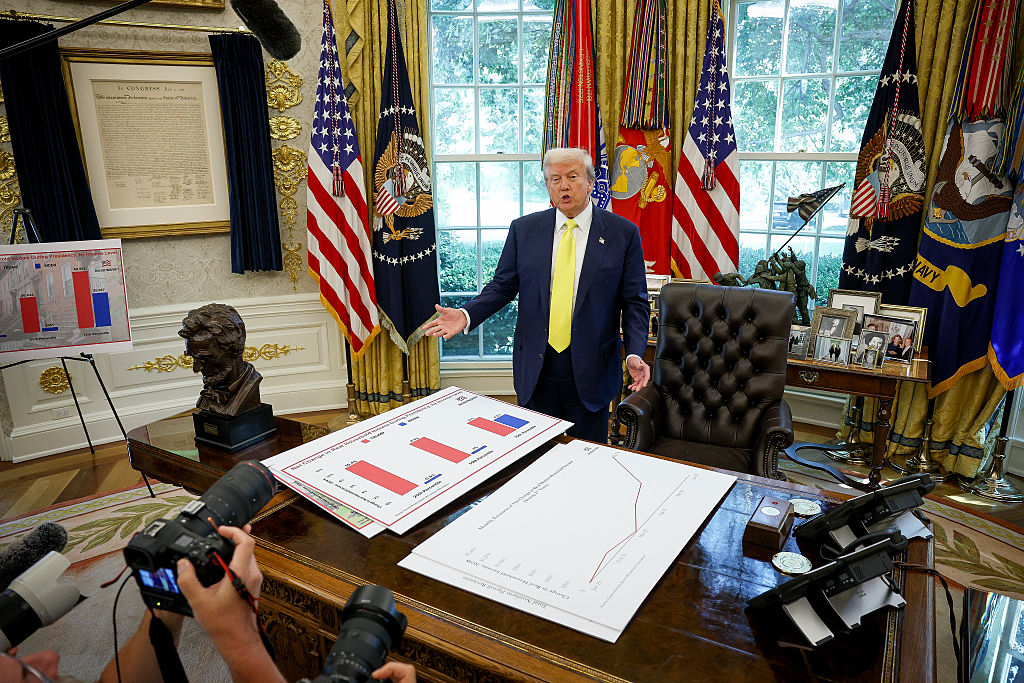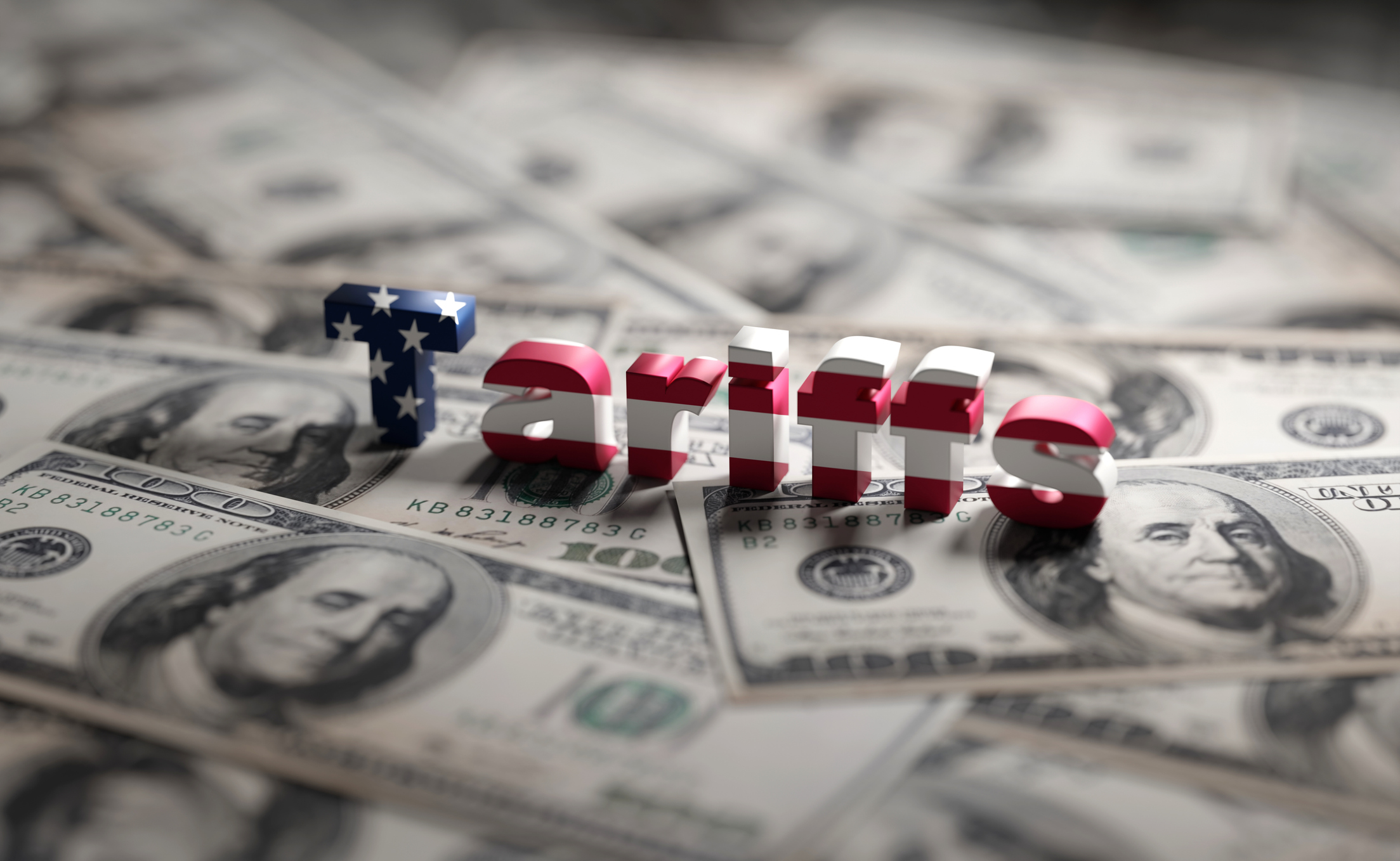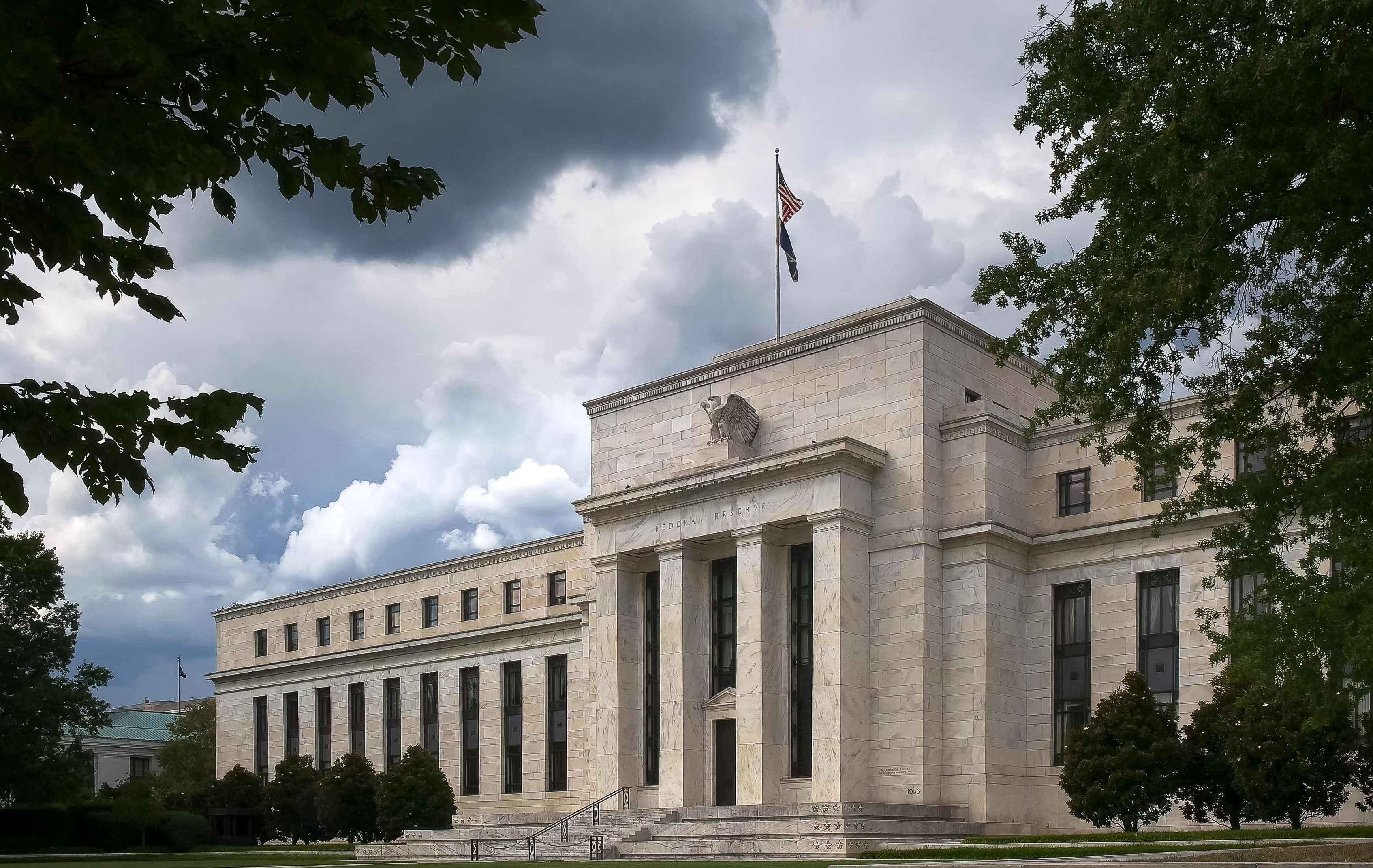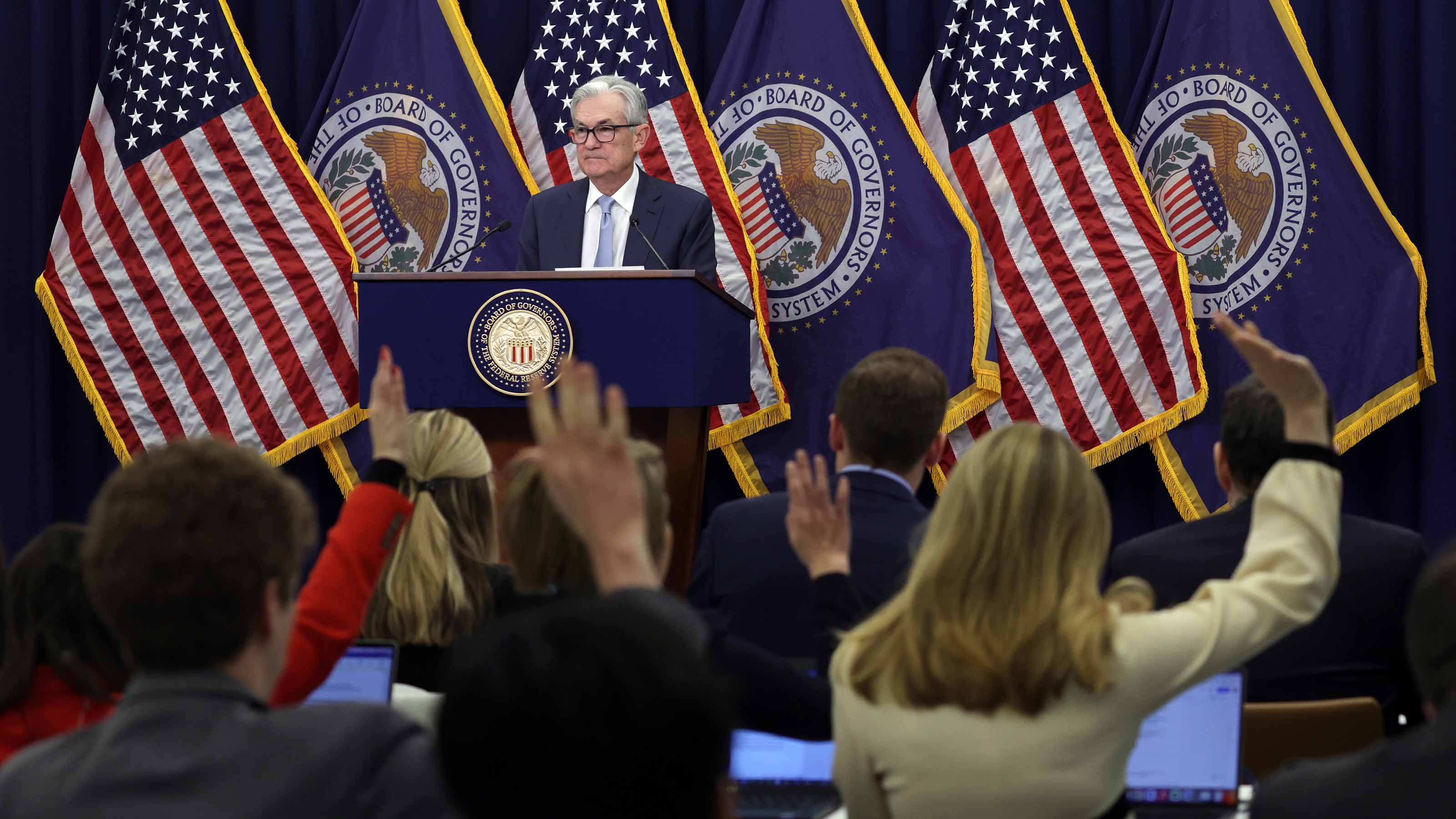What's Next for Stocks? The Pros Weigh In
Investment strategists are increasingly pessimistic about the outlook for equities in the months ahead.


The historically worst month of the year for the stock market is very much living up to its billing.
True, September has never been kind to the S&P 500 – since 1928, it has delivered an average decline in price of 1.0% – but this time around has been a doozy. From the Aug. 31 close through Sept. 27, the most widely used proxy for U.S. equity performance shed 7.8% of its value.
If that weren't painful enough, the blue-chip Dow Jones Industrial Average finally entered bear-market territory in late September, joining the S&P 500 and Nasdaq Composite in a decline of at least 20% from its peak. Unabated hawkishness on the part of global central banks was the proximate cause for the blue-chip barometer finally succumbing to the dreaded bear.
From just $107.88 $24.99 for Kiplinger Personal Finance
Become a smarter, better informed investor. Subscribe from just $107.88 $24.99, plus get up to 4 Special Issues

Sign up for Kiplinger’s Free Newsletters
Profit and prosper with the best of expert advice on investing, taxes, retirement, personal finance and more - straight to your e-mail.
Profit and prosper with the best of expert advice - straight to your e-mail.
With the three major equity benchmarks in bear markets – and just three months left in the calendar year for the stock market to recoup at least some of its deep 2022 losses – it seemed like a good time to check in with the pros on what's next for stocks.
Below please find a smattering of select commentary (sometimes edited for brevity) from investment strategists and the like on the state of markets and what investors can do to position themselves for whatever comes next.
- "The financial markets have struggled with a variety of challenges this year, including inflation, interest rates, slowing economic growth, technical hurdles and geopolitical tensions. We believe corporate profits are the next risk for investors. Companies will begin reporting profits within the next few weeks and the S&P 500 index is projected to grow earnings per share (EPS) by 3.2% in the third quarter, according to FactSet. Challenges to margins include inflation, rising interest rates, increased commodity costs, dollar strength, debt servicing, and supply chain disruption, along with weakening global economic activity. The 'double bottom' is now looming as the equity market tests its June lows. If the 3,640 level for the S&P 500 fails to hold, we look for the 3,500 range to act as the next level of technical support, as it represents the 50.0% retracement of the Index’s March 2020 lows (~2200) and the January 2022 high (~4800)." – John Lynch, chief investment strategist at Comerica Wealth Management
- "As the Fed aims to tame inflation without sending the U.S. economy into a deep recession, equity investors are grappling with their own balancing act ― how to factor competing risks into their portfolios. We believe the answer is to own both growth and value stocks. Value stocks have a history of outperforming growth amid high (4.5% and above) and even moderate (1.1%-4.4%) inflation, based on our analysis of data back to 1927. We see inflation contracting slowly and settling above the roughly 2% level seen in the prior 10 years, a still supportive backdrop for value. Meanwhile, recession is a growing risk as the Fed remains laser focused on combating inflation through higher rates, which crimp economic growth. In this scenario, growth stocks typically have a performance edge given their potential to outpace the slow-growing macro environment. Without making a call for one style over the other, we do see a compelling case for a combination of the two. Be choosy; choose quality. Businesses, whether priced as value or growth, will weather this chapter in history with varying degrees of success. This reinforces the need for selectivity and further argues for a focus on companies with quality characteristics ― particularly strong balance sheets and healthy free cash flow to offer a buffer in the case of a slowdown or profit squeeze. Quality stocks continue to be priced at a discount to the market and, we believe, have potential to outperform as investors look to enhance portfolio resilience amid the prevailing uncertainty." – Tony DeSpirito, chief investment officer of U.S. Fundamental Active Equity at BlackRock
- "The S&P 500 experienced an earnings recession in each of the periods following a 3-month/10-year yield curve inversion, yet analysts expect earnings to continue growing. Perhaps this time is different. It is possible that the Fed will tighten just enough so that inflation subsides as demand cools and hopefully supply chains continue to untangle without triggering a proper recession. Unfortunately, recent history has more examples of the Fed overtightening than precisely slowing the economy while avoiding recession. We have already experienced a -24% peak to trough drawdown in 2022 and the price/earnings multiple for the S&P 500 compressed from over 21x to approximately 17.5x. Some would argue that much of the recession risk is priced in. However, the entirety of the repricing was multiple compression and does not account for a potential decline in earnings which remains the key risk as the economy slows." – Carl Ludwigson, managing director at Bel Air Investment Advisors
- "The Good: Should inflation begin to recede significantly around year-end due to a softer labor market and easing housing inflation that is driving the Consumer Price Index (CPI) in many countries, markets may rebound on prospects for an end to the aggressive rate hikes of 2022. The Bad: Even if excess inflation begins to ease significantly, there is a chance it may soon return. Stocks may rebound as more central banks signal an end to hikes in the coming months, but that may reverse if it becomes apparent inflation is reviving and policy rates would need to be hiked again. This whipsawing pattern may support a continued environment of volatility and wide market swings as seen this year. The Ugly: Alternatively, we could take central bank leaders at their word and pledge to hike rates until the global real rate is restrictive enough to ensure inflation is dead. If they persevere, the economy and stocks may face another year like 2022. Stocks would have further to fall with both price-to-earnings (PE) ratios and earnings contributing to declines; any prospect of a deep recession would likely force analysts to cut earnings estimates." – Jeffrey Kleintop, chief global investment strategist at Charles Schwab
- "More of the same – further dollar strength and the ongoing move higher in Treasury yields are continuing to weigh on risk appetite. We believe it will be very hard for equities to find their footing as long as these headwinds remain in place. That being said, the McClellan Oscillator [a technical indicator] just hit -421, the most negative it has been since March 12th, 2020, suggesting stocks are very oversold from a short-term perspective. Therefore, it would not be a surprise to see a near-term bounce before the downtrend resumes. History says the end of bear markets do not occur until the equity risk premium basis points relative to where it was when the stock market peaked widens by 425. There is more work to do. – David Rosenberg, founder and president of Rosenberg Research
- "Bond investors should maintain below-benchmark portfolio duration and position in Treasury curve flatteners. We also advocate an underweight allocation to spread product versus Treasuries, though we see some near-term value in junk spreads for a tactical trade." – BCA Research
Profit and prosper with the best of Kiplinger's advice on investing, taxes, retirement, personal finance and much more. Delivered daily. Enter your email in the box and click Sign Me Up.

Dan Burrows is Kiplinger's senior investing writer, having joined the publication full time in 2016.
A long-time financial journalist, Dan is a veteran of MarketWatch, CBS MoneyWatch, SmartMoney, InvestorPlace, DailyFinance and other tier 1 national publications. He has written for The Wall Street Journal, Bloomberg and Consumer Reports and his stories have appeared in the New York Daily News, the San Jose Mercury News and Investor's Business Daily, among many other outlets. As a senior writer at AOL's DailyFinance, Dan reported market news from the floor of the New York Stock Exchange.
Once upon a time – before his days as a financial reporter and assistant financial editor at legendary fashion trade paper Women's Wear Daily – Dan worked for Spy magazine, scribbled away at Time Inc. and contributed to Maxim magazine back when lad mags were a thing. He's also written for Esquire magazine's Dubious Achievements Awards.
In his current role at Kiplinger, Dan writes about markets and macroeconomics.
Dan holds a bachelor's degree from Oberlin College and a master's degree from Columbia University.
Disclosure: Dan does not trade individual stocks or securities. He is eternally long the U.S equity market, primarily through tax-advantaged accounts.
-
 Nasdaq Sinks 418 Points as Tech Chills: Stock Market Today
Nasdaq Sinks 418 Points as Tech Chills: Stock Market TodayInvestors, traders and speculators are growing cooler to the AI revolution as winter approaches.
-
 23 Last-Minute Gifts That Still Arrive Before Christmas
23 Last-Minute Gifts That Still Arrive Before ChristmasScrambling to cross those last few names off your list? Here are 23 last-minute gifts that you can still get in time for Christmas.
-
 The Rule of Compounding: Why Time Is an Investor's Best Friend
The Rule of Compounding: Why Time Is an Investor's Best FriendDescribed as both a "miracle" and a "wonder," compound interest is simply a function of time.
-
 What the Rich Know About Investing That You Don't
What the Rich Know About Investing That You Don'tPeople like Warren Buffett become people like Warren Buffett by following basic rules and being disciplined. Here's how to accumulate real wealth.
-
 How to Invest for Rising Data Integrity Risk
How to Invest for Rising Data Integrity RiskAmid a broad assault on venerable institutions, President Trump has targeted agencies responsible for data critical to markets. How should investors respond?
-
 What Tariffs Mean for Your Sector Exposure
What Tariffs Mean for Your Sector ExposureNew, higher and changing tariffs will ripple through the economy and into share prices for many quarters to come.
-
 How to Invest for Fall Rate Cuts by the Fed
How to Invest for Fall Rate Cuts by the FedThe probability the Fed cuts interest rates by 25 basis points in October is now greater than 90%.
-
 Are Buffett and Berkshire About to Bail on Kraft Heinz Stock?
Are Buffett and Berkshire About to Bail on Kraft Heinz Stock?Warren Buffett and Berkshire Hathaway own a lot of Kraft Heinz stock, so what happens when they decide to sell KHC?
-
 How the Stock Market Performed in the First 6 Months of Trump's Second Term
How the Stock Market Performed in the First 6 Months of Trump's Second TermSix months after President Donald Trump's inauguration, take a look at how the stock market has performed.
-
 Fed Leaves Rates Unchanged: What the Experts Are Saying
Fed Leaves Rates Unchanged: What the Experts Are SayingFederal Reserve As widely expected, the Federal Open Market Committee took a 'wait-and-see' approach toward borrowing costs.
-
 Fed Sees Fewer Rate Cuts in 2025: What the Experts Are Saying
Fed Sees Fewer Rate Cuts in 2025: What the Experts Are SayingFederal Reserve The Federal Reserve cut interest rates as expected, but the future path of borrowing costs became more opaque.